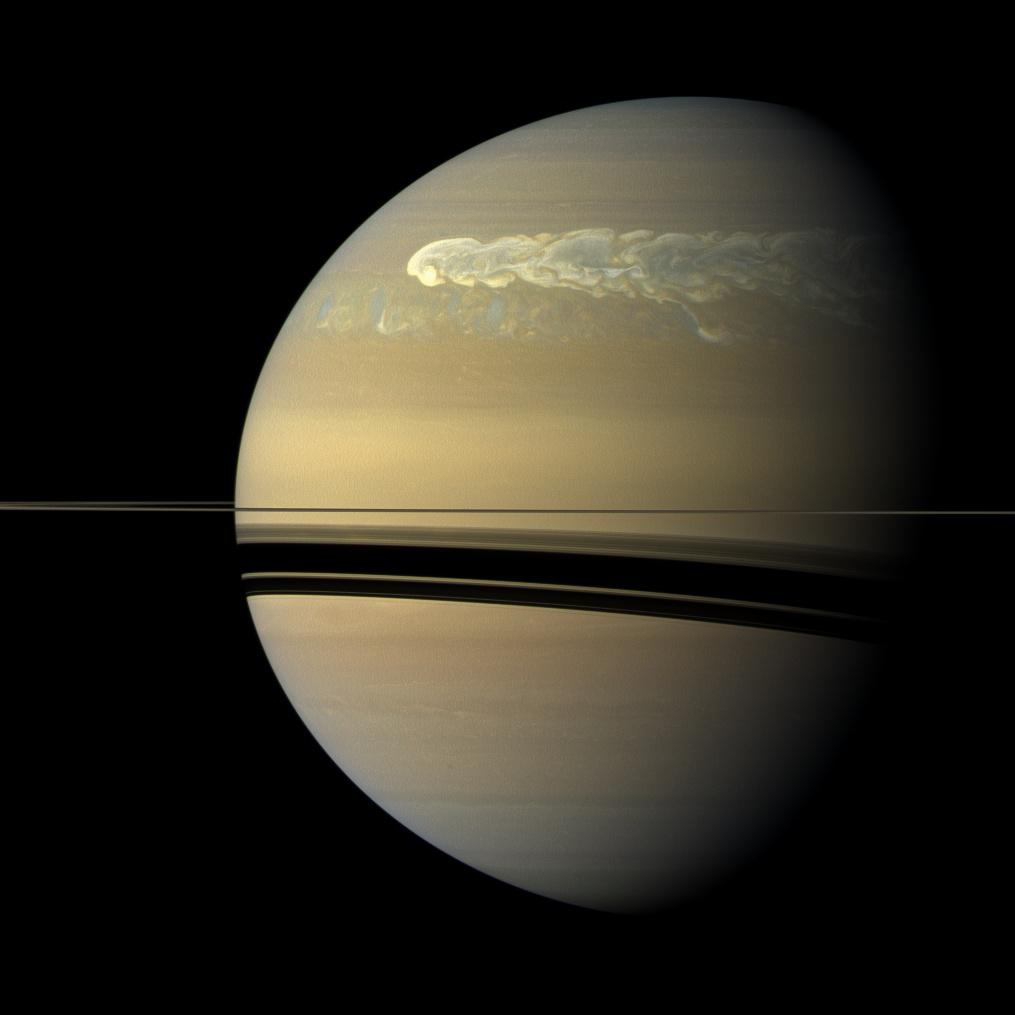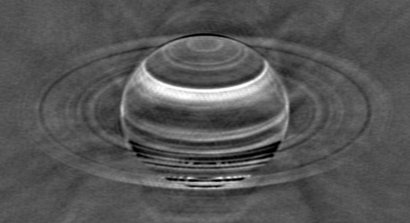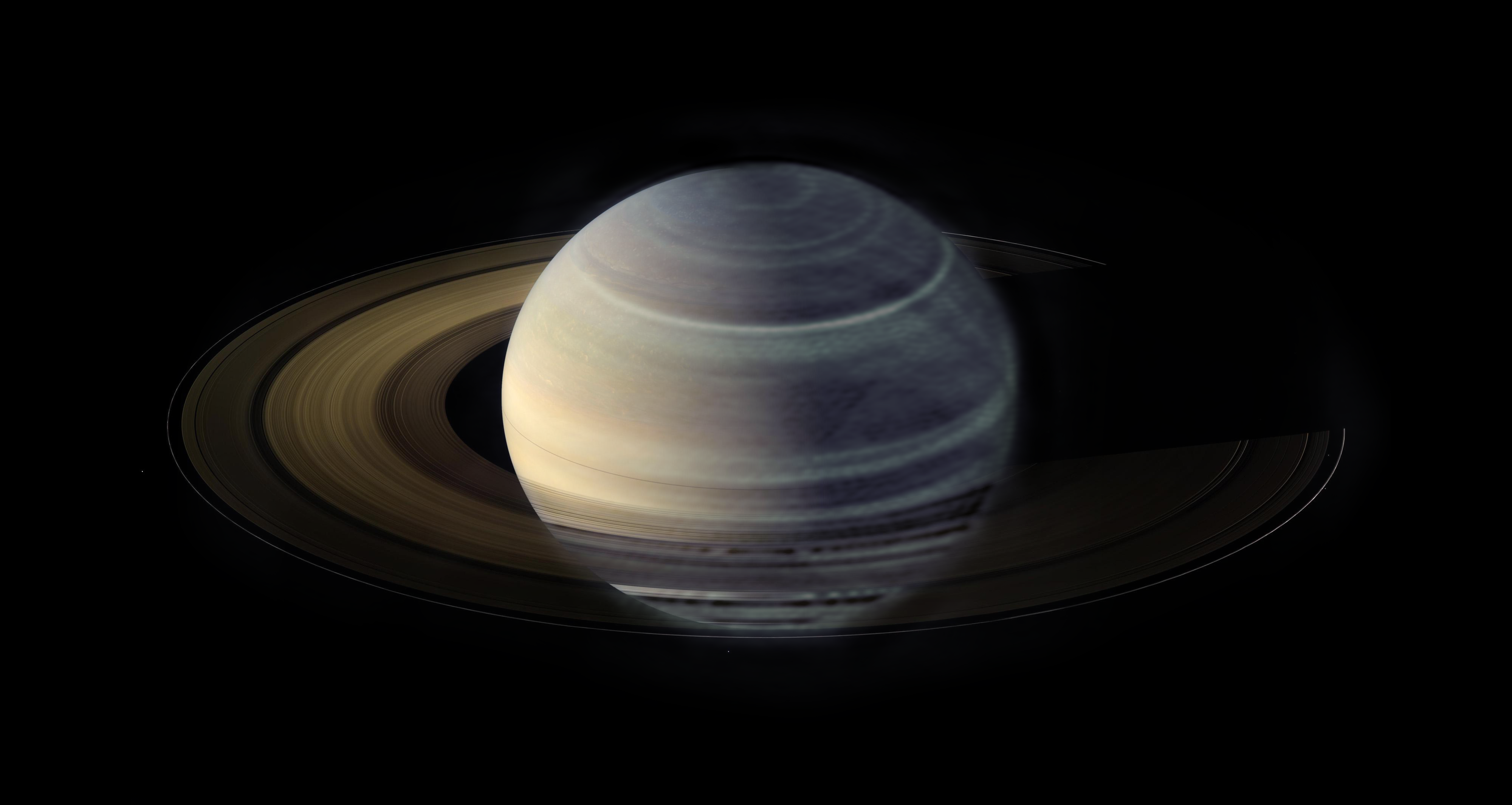Hundred-year storms? That’s how long they last on Saturn.

NASA/JPL/Space Science Institute
August 11, 2023
The largest storm in the solar system, a 10,000-mile-wide anticyclone called the Great Red Spot, has decorated Jupiter’s surface for hundreds of years.
A new study now shows that Saturn — though much blander and less colorful than Jupiter — also has long-lasting megastorms with impacts deep in the atmosphere that persist for centuries.
The study was conducted by astronomers from the University of California, Berkeley, and the University of Michigan, Ann Arbor, who looked at radio emissions from the planet, which come from below the surface, and found long-term disruptions in the distribution of ammonia gas.
The study was published today in the journal Science Advances.

R. J. Sault and I. de Pater
Megastorms occur approximately every 20 to 30 years on Saturn and are similar to hurricanes on Earth, although significantly larger. But unlike Earth’s hurricanes, no one knows what causes megastorms in Saturn’s atmosphere, which is composed mainly of hydrogen and helium with traces of methane, water and ammonia.
“Understanding the mechanisms of the largest storms in the solar system puts the theory of hurricanes into a broader cosmic context, challenging our current knowledge and pushing the boundaries of terrestrial meteorology,” said lead author Cheng Li, a former 51 Peg b Fellow at UC Berkeley who is now an assistant professor at the University of Michigan.
Imke de Pater, a UC Berkeley professor emerita of astronomy and of earth and planetary sciences, has been studying gas giants for over four decades to better understand their composition and what makes them unique, employing the Karl G. Jansky Very Large Array in New Mexico to probe the radio emissions from deep inside the planet.
“At radio wavelengths, we probe below the visible cloud layers on giant planets. Since chemical reactions and dynamics will alter the composition of a planet’s atmosphere, observations below these cloud layers are required to constrain the planet’s true atmospheric composition, a key parameter for planet formation models,” she said. “Radio observations help characterize dynamical, physical and chemical processes including heat transport, cloud formation and convection in the atmospheres of giant planets on both global and local scales.”
As reported in the new study, de Pater, Li and UC Berkeley graduate student Chris Moeckel found something surprising in the radio emissions from the planet: anomalies in the concentration of ammonia gas in the atmosphere, which they connected to the past occurrences of megastorms in the planet’s northern hemisphere.
According to the team, the concentration of ammonia is lower at midaltitudes, just below the uppermost ammonia-ice cloud layer, but has become enriched at lower altitudes, 100 to 200 kilometers deeper in the atmosphere. They believe that the ammonia is being transported from the upper to the lower atmosphere via the processes of precipitation and reevaporation. What’s more, that effect can last for hundreds of years.

S. Dagnello (NRAO/AUI/NSF), I. de Pater et al (UC Berkeley)
The study further revealed that although both Saturn and Jupiter are made of hydrogen gas, the two gas giants are remarkably dissimilar. While Jupiter does have tropospheric anomalies, they have been tied to its zones (whitish bands) and belts (darkish bands) and are not caused by storms like they are on Saturn. The considerable difference between these neighboring gas giants is challenging what scientists know about the formation of megastorms on gas giants and other planets and may inform how they’re found and studied on exoplanets in the future.
The National Radio Astronomy Observatory (NRAO) is a facility of the National Science Foundation, operated under cooperative agreement by Associated Universities Inc.
RELATED INFORMATION
- Long lasting, deep effect of Saturn’s giant storms (Science Advances)
- Imke de Pater’s explanation of the VLA data
- Webb Space Telescope, Keck team up to study Saturn’s moon Titan (Dec. 2022)